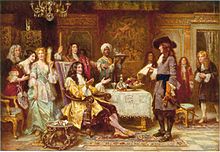The Pennsylvania Portal Pennsylvania (/ˌpɛnsɪlˈveɪniə/ , lit. 'Penn's forest country'), officially the Commonwealth of Pennsylvania (Pennsylvania Dutch: Pennsylvanie), is a state spanning the Mid-Atlantic, Northeastern, Appalachian, and Great Lakes regions of the United States. Pennsylvania borders Delaware to its southeast, Maryland to its south, West Virginia to its southwest, Ohio and the Ohio River to its west, Lake Erie and New York to its north, the Delaware River and New Jersey to its east, and the Canadian province of Ontario to its northwest. Pennsylvania was founded in 1681 through a royal land grant to William Penn, the son of the state's namesake. Prior to that, between 1638 and 1655, a southeast portion of the state was part of New Sweden, a Swedish Empire colony. Established as a haven for religious and political tolerance, the colonial-era Province of Pennsylvania was known for its relatively peaceful relations with native tribes, innovative government system, and religious pluralism. Pennsylvania played a vital and historic role in the American Revolution and the ultimately successful quest for independence from the British Empire, hosting the First and Second Continental Congress leading to the adoption of the Declaration of Independence. On December 12, 1787, Pennsylvania became the second state to ratify the U.S. Constitution. The bloodiest battle of the American Civil War, at Gettysburg over three days in July 1863, proved the war's turning point, leading to the Union's preservation. Throughout the late 19th and 20th centuries, the state's manufacturing-based economy contributed to the development of much of the nation's early infrastructure, including key bridges, skyscrapers, and military hardware used in U.S.-led victories in World War I, World War II, and the Cold War. Pennsylvania's geography is highly diverse. The Appalachian Mountains run through the center of the state; the Allegheny and Pocono mountains span much of Northeastern Pennsylvania; close to 60% of the state is forested. While it has only 140 miles (225 km) of waterfront along Lake Erie and the Delaware River, Pennsylvania has the most navigable rivers of any state in the nation, including the Allegheny, Delaware, Genesee, Ohio, Schuylkill, Susquehanna, and others. (Full article...) This is a Featured article, which represents some of the best content on English Wikipedia..
Taylor Alison Swift (born December 13, 1989) is an American singer-songwriter. A subject of widespread public interest with a vast fanbase, she has influenced the music industry, popular culture, and politics through her songwriting, artistry, entrepreneurship, and advocacy. Swift began professional songwriting at age 14. She signed with Big Machine Records in 2005 and achieved prominence as a country pop singer with the albums Taylor Swift (2006) and Fearless (2008). Their singles "Teardrops on My Guitar", "Love Story", and "You Belong with Me" were crossover successes on country and pop radio formats and brought Swift mainstream fame. She experimented with rock and electronic styles on her next albums, Speak Now (2010) and Red (2012), respectively; Red featured her first Billboard Hot 100 number-one single, "We Are Never Ever Getting Back Together". Swift recalibrated her image from country to pop with 1989 (2014), a synth-pop album containing the chart-topping songs "Shake It Off", "Blank Space", and "Bad Blood". Media scrutiny inspired the hip-hop-influenced Reputation (2017) and its number-one single "Look What You Made Me Do". (Full article...)Selected geography article -White Deer Hole Creek is a 20.5-mile (33.0 km) tributary of the West Branch Susquehanna River in Clinton, Lycoming and Union counties in the U.S. state of Pennsylvania. A part of the Chesapeake Bay drainage basin, the White Deer Hole Creek watershed drains parts of ten townships. The creek flows east in a valley of the Ridge-and-valley Appalachians, through sandstone, limestone, and shale from the Ordovician, Silurian, and Devonian periods. As of 2006, the creek and its 67.2-square-mile (174 km2) watershed are relatively undeveloped, with 28.4 percent of the watershed given to agriculture and 71.6 percent covered by forest, including part of Tiadaghton State Forest. The western part of White Deer Hole Creek has very high water quality and is the only major creek section in Lycoming County classified as Class A Wild Trout Waters, defined by the Pennsylvania Fish and Boat Commission as "streams which support a population of naturally produced trout of sufficient size and abundance to support a long-term and rewarding sport fishery." The rest of the creek and its major tributary (Spring Creek) are kept stocked. There are opportunities in the watershed for canoeing, hunting, and camping, and trails for hiking and horseback riding. (Full article...)Selected image -Did you know -
Related portalsWikiprojectsThis is a Good article, an article that meets a core set of high editorial standards.
Elizabethtown station is an Amtrak railroad station on the Keystone Corridor in Elizabethtown, Lancaster County in the U.S. state of Pennsylvania. The station is served by Amtrak's Keystone Service between New York City and Harrisburg, and by the Pennsylvanian between New York and Pittsburgh. The station was built in 1915 by the Pennsylvania Railroad to replace another that had been built in 1900. The station building was closed in 1977 by Amtrak. The title to the building was transferred to the borough of Elizabethtown in 1998, and it was leased back to Amtrak. From 2009 to 2011, the station underwent a 21-month renovation to make it handicapped-accessible. (Full article...) Selected article - The history of Pennsylvania stems back thousands of years when the first indigenous peoples occupied the area of what is now Pennsylvania. In 1681, Pennsylvania became an English colony when William Penn received a royal deed from King Charles II of England. Although European activity in the region precedes that date (the area was first colonized by the Dutch in 1643). The area was home to the Lenape, Susquehannocks, Iroquois, Erie, Shawnee, Arandiqiouia, and other American Indian tribes. Most of these tribes were driven off or reduced to remnants as a result of diseases, such as smallpox. The English took control of the colony in 1667. In 1681, William Penn, a Quaker, established a colony based on religious tolerance; it was settled by many Quakers along with its Philadelphia, its largest city, which was also the first planned city. In the mid-1700s, the colony attracted many German and Scots-Irish immigrants. (Full article...)Pennsylvania news
CategoriesState factsState Facts
State symbols
Pennsylvania topicsGeneral imagesThe following are images from various Pennsylvania-related articles on Wikipedia.
Associated WikimediaThe following Wikimedia Foundation sister projects provide more on this subject:
Discover Wikipedia using portals |

































































